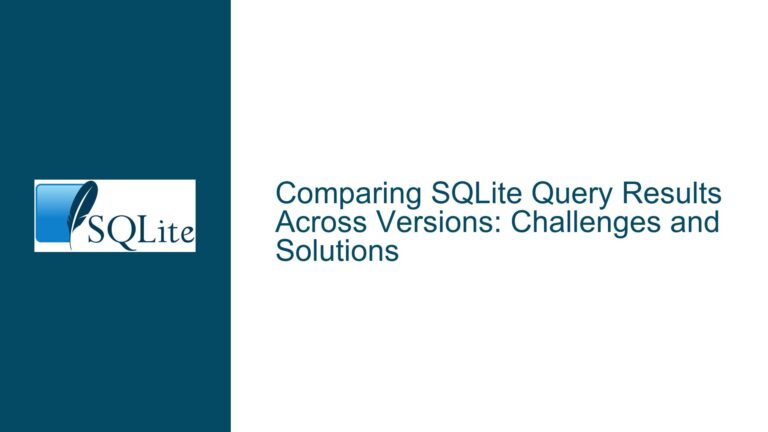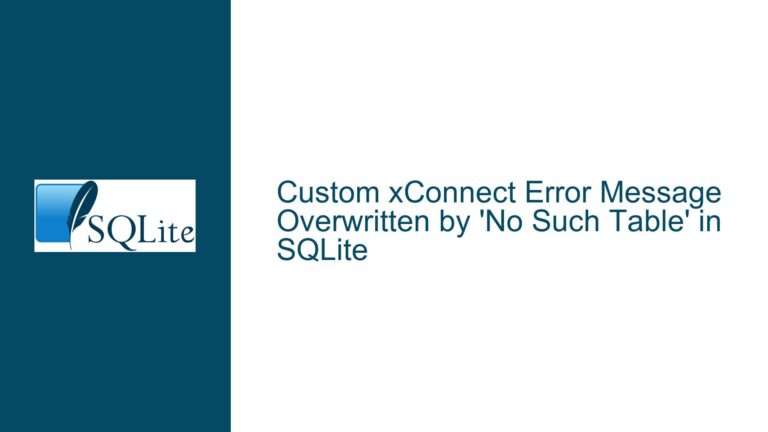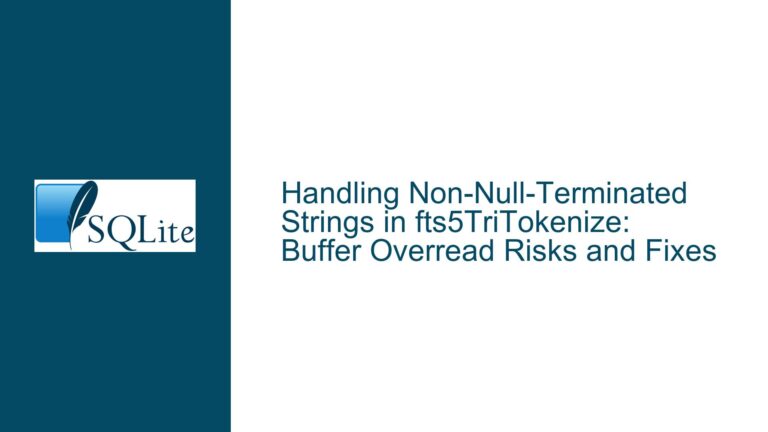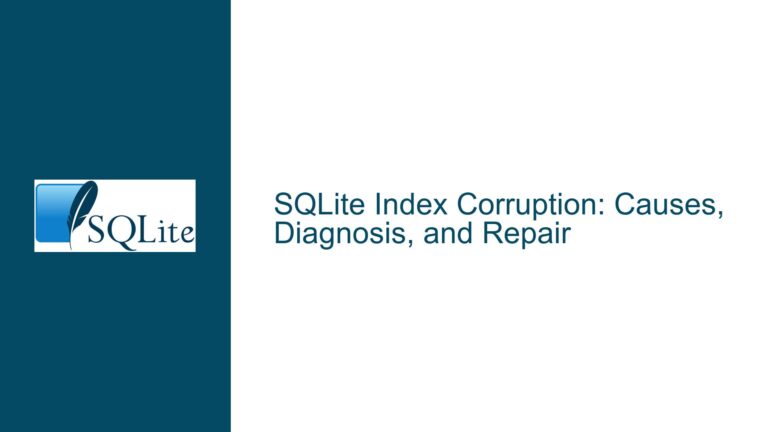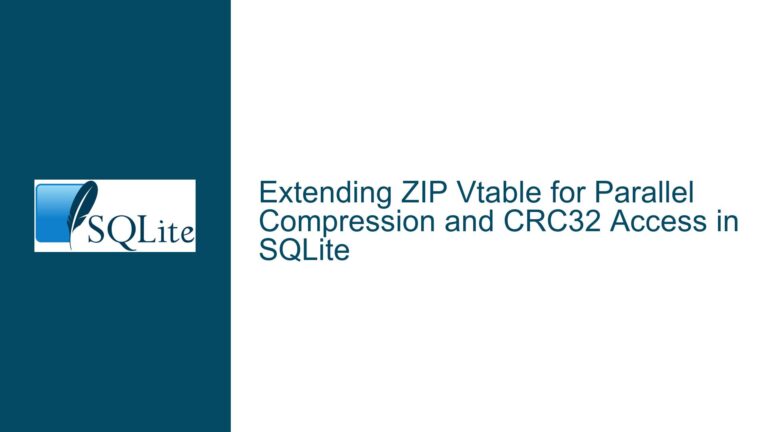CVE-2020-9794 and Its Impact on SQLite
Issue Overview: CVE-2020-9794 and Its Connection to SQLite
CVE-2020-9794 is a security vulnerability that was identified and fixed in Apple products, specifically involving an Out-of-Bounds (OOB) Read issue. This vulnerability was flagged in systems using SQLite, either directly or through Linux distribution packages. The core concern revolves around whether the fix applied by Apple is the same as the OOB Read fix included in SQLite version 3.32.0, which was released around the same time. The SQLite project documented this fix in their changelog at this link.
The confusion arises because Apple’s disclosure points to SQLite as the component they fixed, but the SQLite project does not explicitly track CVEs. This has led to ambiguity in the National Vulnerability Database (NVD) and vulnerability scanners, which are flagging systems using SQLite as vulnerable, even when they are running patched versions. The issue is further complicated by the fact that Apple does not publicly disclose the exact nature of their security patches, making it difficult to determine whether their fix aligns with the SQLite project’s changes or if it is a proprietary modification.
The broader implications of this issue include false positives in vulnerability scanners, miscommunication in the NVD, and challenges for organizations trying to comply with security policies. This situation highlights the importance of clear communication between software vendors, open-source projects, and vulnerability databases to ensure accurate reporting and resolution of security issues.
Possible Causes: Misalignment Between Apple’s Fix and SQLite’s Public Fixes
The primary cause of the confusion surrounding CVE-2020-9794 lies in the misalignment between Apple’s internal fixes and the publicly documented fixes in the SQLite project. Apple’s disclosure mentions SQLite as the component they patched, but they do not provide detailed information about the nature of their changes. This lack of transparency makes it difficult to determine whether Apple’s fix is the same as the OOB Read fix included in SQLite 3.32.0 or if it is a separate, proprietary modification.
Another contributing factor is the SQLite project’s stance on CVEs. The SQLite team does not track CVEs, as they believe the information provided in CVEs is often too vague to be useful. This means that vulnerabilities reported against SQLite are not officially documented or cross-referenced by the SQLite team, leading to potential discrepancies in how these vulnerabilities are reported and addressed in the NVD.
Additionally, the automated nature of vulnerability scanners exacerbates the problem. These tools often rely on the NVD for their vulnerability data, but they may not account for software versions or specific fixes applied by vendors like Apple. As a result, systems running patched versions of SQLite may still be flagged as vulnerable, creating unnecessary noise and confusion for security teams.
Finally, the lack of communication between Apple and the broader open-source community contributes to the issue. While Apple’s engineering team may have communicated privately with the SQLite team, this information is not shared publicly, leaving users and Linux distributions in the dark about the exact nature of the fixes and their applicability to the general SQLite codebase.
Troubleshooting Steps, Solutions & Fixes: Resolving CVE-2020-9794 False Positives
To address the issues caused by CVE-2020-9794 and its misalignment with SQLite’s public fixes, the following steps can be taken to troubleshoot and resolve the false positives:
Verify SQLite Version and Patches: The first step is to ensure that the SQLite version in use is 3.32.0 or later, as this version includes the OOB Read fix documented by the SQLite project. Organizations should check their systems and confirm that the patched version is deployed. If the version is older than 3.32.0, upgrading to the latest version is strongly recommended.
Review Vulnerability Scanner Configuration: Many vulnerability scanners flag systems based on CVE data without considering software versions or specific fixes. Organizations should review their scanner configurations and ensure that they are accounting for version-specific fixes. This may involve creating custom rules or exceptions to prevent false positives for CVE-2020-9794 on systems running SQLite 3.32.0 or later.
Engage with Linux Distributions: Since Linux distributions package and distribute SQLite, they play a key role in ensuring that the correct versions and patches are available to users. Organizations should work with their distribution maintainers to confirm that the SQLite packages provided include the necessary fixes. If discrepancies are found, they should be reported to the distribution’s security team for resolution.
Contact Apple for Clarification: While Apple does not publicly disclose the details of their security patches, organizations affected by CVE-2020-9794 can attempt to contact Apple for clarification. This may involve reaching out to Apple’s security team or filing a support request to obtain more information about the nature of their SQLite fix and its applicability to the general SQLite codebase.
Update NVD Records: If it is determined that Apple’s fix aligns with the SQLite project’s OOB Read fix, organizations can work with the NVD to update the CVE record. This may involve providing evidence, such as the SQLite changelog entry, to demonstrate that the vulnerability has been addressed in the public SQLite codebase. Updating the NVD record will help prevent false positives in vulnerability scanners.
Monitor SQLite Project Updates: The SQLite project regularly releases updates and security fixes. Organizations should monitor these releases and apply updates promptly to ensure that their systems are protected against known vulnerabilities. Subscribing to the SQLite mailing list or following the project’s website can help stay informed about new releases.
Implement Application-Level Protections: Since many CVEs against SQLite assume the presence of SQL injection vulnerabilities, organizations should implement robust application-level protections to prevent SQL injection attacks. This includes using parameterized queries, input validation, and other security best practices to reduce the attack surface.
Collaborate with the Community: The open-source community can be a valuable resource for resolving issues like CVE-2020-9794. Organizations can engage with the SQLite community through forums, mailing lists, or GitHub to share information, ask questions, and collaborate on solutions. This collective effort can help clarify ambiguities and improve the overall security of the ecosystem.
By following these steps, organizations can effectively address the false positives caused by CVE-2020-9794 and ensure that their systems are secure and compliant with security policies. Clear communication, proactive monitoring, and collaboration with vendors and the open-source community are key to resolving such issues and maintaining a robust security posture.


